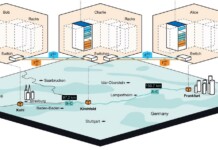
Living near a leafy green area cuts your risk of a stroke, scientists have found.
Their research shows that people who live less than 328 yards from a green space (300 meters) are at 16 percent lower risk from a stroke.
“People who are surrounded by greater levels of greenery at their place of residence are protected against the onset of stroke,” said study co-author Dr Carla Avellaneda.
The findings indicate there is a clear relationship between levels of pollutants in the atmosphere and the risk of having a stroke.
For every ten micrograms per cubic meter of nitrogen dioxide in the air, the risk increases by 4%—and every extra cubic microgram of soot in the air raises the risk by 5%. Both of these are linked to car traffic.
These risks are across the board—unaffected by your age, smoking habits, or socioeconomic factors.
LOOK: Refugees in Cameroon Have Turned a Treeless Desert Camp Into a Thriving Forest
In contrast, having an abundance of green spaces near your home cuts your risk from a stroke by up to 16%.
For the study, the team analyzed the exposure of 3.5 million people in Catalonia, Spain, to the atmospheric pollutants. The collaboration—led by the Hospital del Mar Medical Research Institute and the local governing Catalan Health Quality and Assessment Agency—used geographic referencing and designing models to measure exposure to the nitrogen dioxide and soot, using population data.
CHECK OUT: New Initiative Will Plant 18 Million Trees in ‘Urban Forests’
Everyone they looked at was an adult who had not suffered a stroke before the study began.
The researchers say that, in light of their findings published in the journal Environment International, recommendations about the levels of nitrogen oxide and fine particulate matter in the atmosphere deemed ‘safe’ by the European Union should be tightened.
Living near lots of leafy land is believed to help people exercise, reduce stress, and help people socialize with friends.
RELATED: Hedgerows Are 2,000 Times More Valuable For Ecosystems Than We Could Imagine
“Despite compliance with the levels set by the European Union, we are faced with the paradox that there is still a health risk, such as the one we identified in this study, where there is a direct relationship between exposure to pollutants in our environment and the risk of suffering a stroke,” said the study’s lead author Dr Rosa Maria Vivanco.
Boston researchers have found that trees and soils on the outermost edges of urban wooded areas and city parks may also play a greater role in fighting climate change than previously imagined, so cities of all sizes should continue planting more trees.
SHARE The Good News With City Dwellers on Social Media…




















